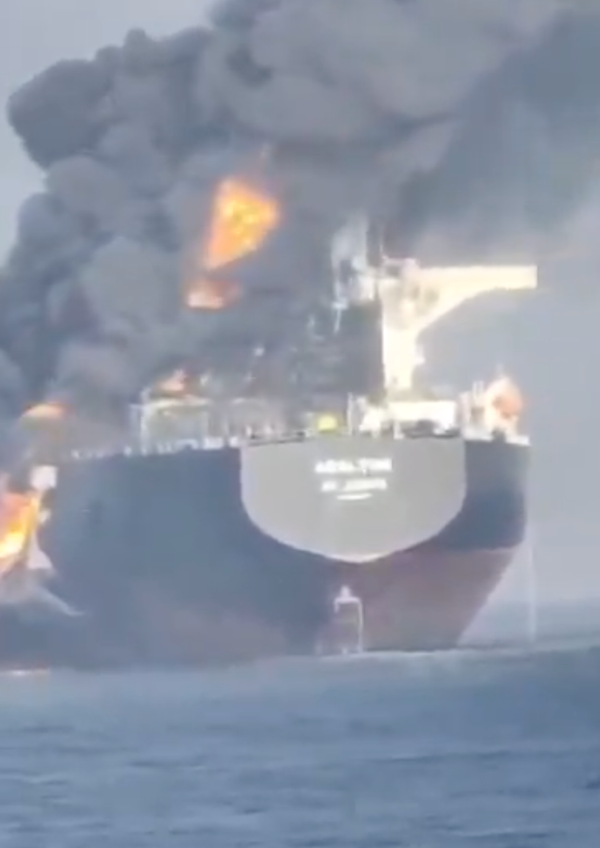Marhelm graphical updates and next steps
I now have two designers and three shipping guys working full time. Here's what's coming next for Marhelm.
As you may know, I run a site for shipping and commodity investors called Marhelm. We started out primarily focused on oil tankers but now have coverage on several shipping sectors. The core of the product comes down to:
- Daily updates of fixtures/rates (deals being done in the market)
- Information on time charter deals
- Key statistics around fleet composition / ordering / new building
- Consolidated listing of Maritime equities
- A weekly report showing what changed, earnings highlights, etc.
- Special focus reports and interviews of shipping executives and commodity industry players
The first version launched as TankerData back in 2020, and has grown to what Marhelm is today. We serve hundreds of investors who use our information to help inform market decisions.
My goal now is to take the product to the next step and reach a broader audience that includes market participants in the physical shipping and commodity universe, while continuing to add value to the core offering.
The updates we completed over the past few months (and went live with this week) were focused on improving the graphical consistency, quality, and information scalability of our existing product. We wanted to build a more consistent and unified navigation system, a better way to filter data, and provide a snappier user experience that performs better on mobile devices. Though there are certainly still improvements to be made and we are working on them, I think we’ve largely accomplished what we set out to do. Here are some screenshots of the new version:
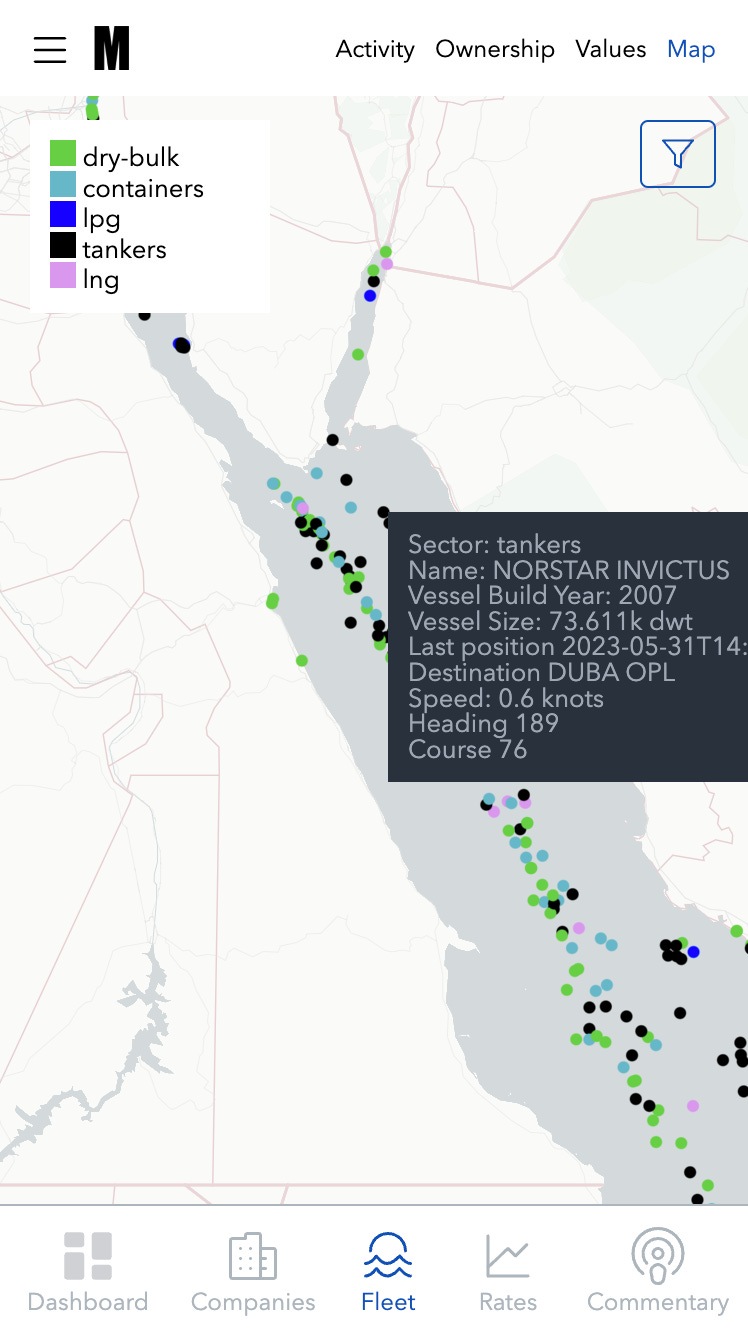
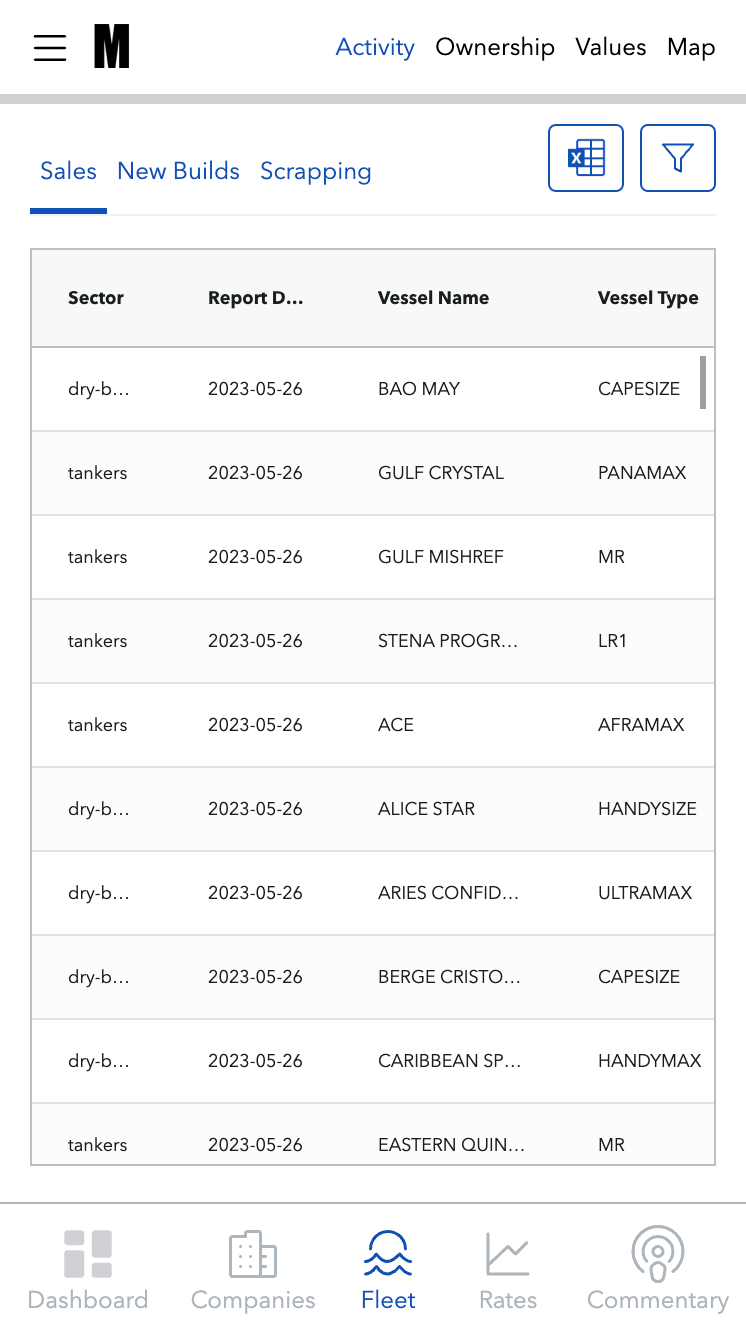

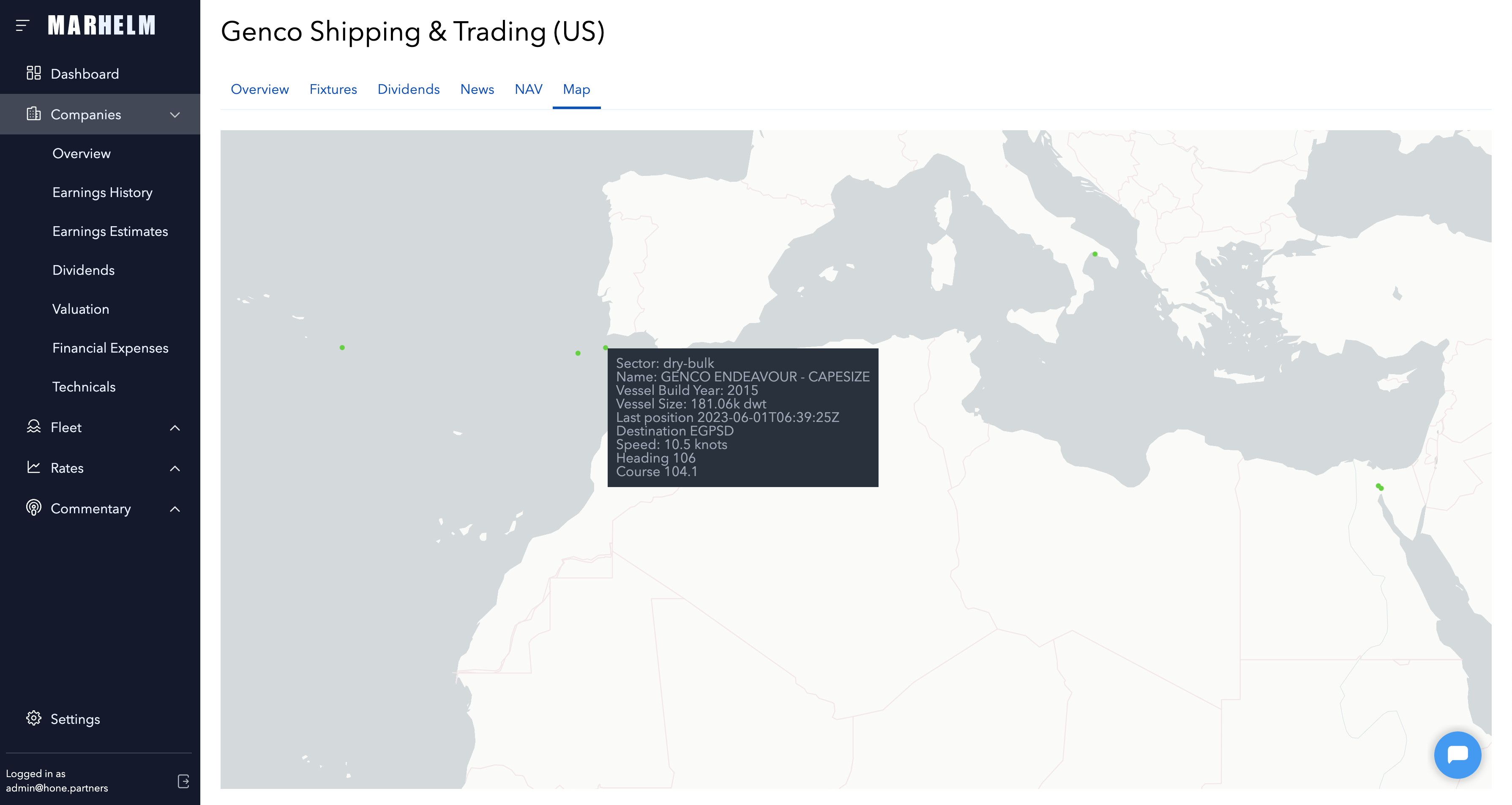


We’ve received universally positive feedback from existing users on the new version. The first comment was “I am so glad I signed up when the price was low”.
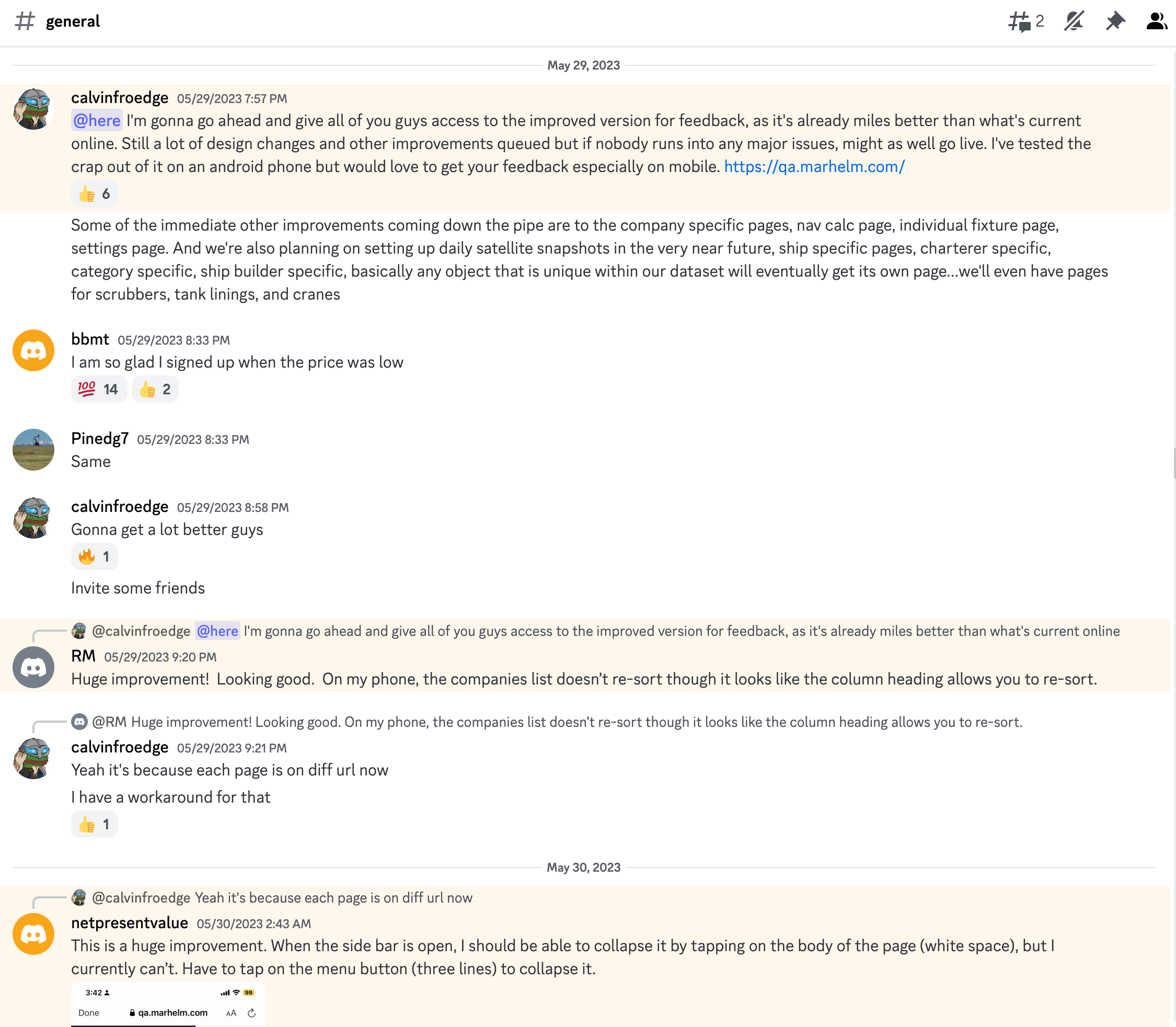
Compare to this post from last year and judge for yourself the progress I made alone. Now I’ve hired a team and we can move much faster.
What’s next?
Yesterday I turned 34. Marhelm is the first significant, completely entrepreneurial software project that I’ve embarked on, taking the sole funding risk as a solo founder, and doing all the work as a solo developer. I failed at software entrepreneurship as a teenager (I was inexperienced, lacked confidence, and depended too much on other people) and was too scared to try really commit to trying again in my 20s. I spent nearly a decade doing consulting projects, saved money, and finally got burned out on building things for other people. What I did gain was that ten thousand hours it takes to get really good at something. I worked on business intelligence platforms, portfolio management software, network attached storage, factory automation, ecommerce, medical big data, and numerous other projects. I did front end, back end, dev ops, and everything in between.
Marhelm is that entrepreneurial adventure that I should have done in my 20s and just never did. It’s the thing that just happened, the one I’m sticking with and prioritizing - at least for this decade of my life. Despite stumbling into it - I have a big vision for what it can become - a vision that grows with every day of work that I put into it.
Imagine a platform where you can analyze global trade from the highest level to the smallest details, from nation state commodity producers to the more than 50 ship fleets we already cover and all of them that we don’t, to those that refine the raw materials. Imagine that every conceptual object is something you can explore - from small things like an engine design or a ship feature, to the birds eye view of global shipping lanes, to the nation and city level data on resource consumption.
It may seem like this has been done before - but it hasn’t. Not like I imagine it. They called Mike Bloomberg crazy when he said he was going to take the world’s financial data and put it on a computer screen. I’m going to take world trade data and link it together in an intuitive, multi spectrum way like no one else ever has. I’m going to make global trade - something that right now is disjointed and fractured - into something as immersive as a lucid dream.
Big talk. How?
I know what I have now seems humble next to the Kplers, Vortexas, and Bloombergs of the world - but people who signed up for my original TankerData remember well just how humble the beginning was. We are miles ahead of where we started, and that progress is accelerating.
The #1 rule - keep shipping product. Whether it’s improvements to existing features (of which we have a large number queued) or dreaming up new features and datasets, we’re just gonna keep at it, one foot in front of the other. I hiked the Appalachian Trail in my 20s and people used to ask me, how the heck do you walk over 2000 miles? One step at a time, all day long, for months on end. Of course, where I want to take Marhelm is more like walking till I’m 40.
I’m focused on maximizing the value that I can add as an individual programmer, while hiring other people that can focus on things like content, business, and dreaming up new things.
The team
I hired a couple of very talented designers full time, who have helped me get the new system to the point it is now. I’m going to let them keep running and design as much as they can, with a broad focus on new ideas. Meanwhile, we will continue polishing the features we already have and adding new features and data one at a time. I want my designers to dream big and run ahead, while I slowly and steadily mop up behind them. Getting the current graphical updates implemented was a big effort - but now we have a more consistent and scalable design and navigational structure. I will continue standardizing and improving the existing features and already have a number of additional pending design updates to implement.
I haven’t found the right front end developer to bring onto the team yet, but hopefully someone will present themselves and can help on that front as well. I will, however, continue to do the work as necessary. I thoroughly believe that the worst thing I can do is hire another coder who isn’t a good fit. Keeping conceptual integrity in the system and building a framework the next hire can work in is what’s important to me as a programmer. I saw too many projects as a consultant full of monkeys herding cats to take a risk on a hire before I have things really locked down tight.
On the data ingestion front, things are also ripe for improvement. I am running cron jobs on a single server right now. Some data I update by running scripts manually. I need to add some sophistication to this system - i.e. build a dashboard for viewing and scheduling jobs, looking at output and failures - something that scales to more than one person and to a large number of jobs. I have a close friend who worked at Microsoft Research who has been a great sounding board for ideas and shows me the solutions he’s using to similar problems, which is helping. Anyway, I will soldier on as the solo developer for the time being.
We’re also pushing hard on the content front. I hired a polymath journalist from Norway with a lot of experience in shipping and energy who has landed an impressive number of CEO interviews in a short time and has helped us quicken some of the content creation.
Last but certainly not least, I hired a multi decade shipping and investment banking professional who is an actual captain to assist with business development. He’s done a good job of helping on content as well, and getting us in front of a new class of clientele that is difficult to reach through social media - the physical commodities guys. That’s challenging me to up the game more and build tools that have value for even people who are out there booking physical cargoes.
What’s coming - near term
- More improvements to existing user experience
- More sophisticated data management system
- Way more companies (we already track more than 50 public equities and their fleets, now we have a good system in place to add even more)
- Offshore support vessel fixtures (already providing via Discord)
- More tanker and dry bulk fixtures (already receiving)
- Tanker cargo and enquiry data (already receiving)
- Daily AIS snapshots of zones of interest (we’ll start with a few big ports like Ras Tanura, Rotterdam, and Chiwan) - what ships are leaving, what ships are entering
- Reincorporate EIA, OPEC, and other major free reports (this was in the first version, but I took it out as I did not have a good foundation in place)
What’s coming - medium term
- Terminology / methodology library
- More info on ship particulars
- Info on private companies and counter parties
- Info on particular ports
- Maximization of publicly available government/association trade databases
- Maximizing what’s possible with AIS data analysis (think Kpler, Vortexa type tools)
- Analysis of satellite imagery data
Why sign up now?
Beyond supporting an innovative enterprise, I think - and many of my subscribers agree - that we have already delivered substantial value. Our info helped subscribers stay in the tanker trade in the dark days (I’m now up ~4x on my OET shares not counting dividends), and helped others avoid a big drawdown in dry bulk and containers at the top.
Our order book, S&P, and fixture data, and the weekly reports and community that accompanies it, gives investors access to quality, concise information at an affordable price. Our platform provides sophistication and structure that the free information sources do not. Our offering is beginning to approach competitiveness with even some of the very expensive tools, and will continue to get even better.
Our customers lock in their price for life. If you sign up at the current price of $2499/yr, you keep that price (and there are also discounts available via coupon codes or paying with bitcoin). Contact sales@marhelm.com to schedule a demo.
To those of you who are already customers, I appreciate your support and I’m looking forward to what comes next.

